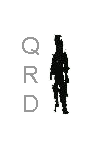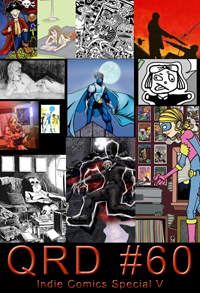
 |
| about
this issue Indie Comic Creator Interviews: Mike Dawson Floyd Lewis A.P. Fuchs Darin Shuler Trevor Denham Jules Rivera John Steventon Lorenzo Ross John Allison Michael San Giacomo Matt Chic Jackie Crofts Don W. Seven Derek Baxter Interview Series Updates: Nate McDonough Jason Dube Brian John Mitchell |
 |
 |
 |
 |
 |
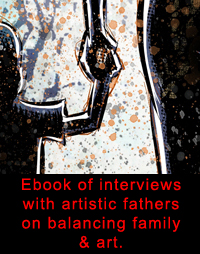 |
|
|
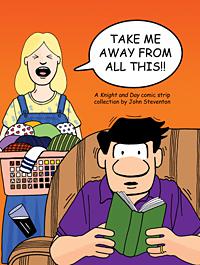 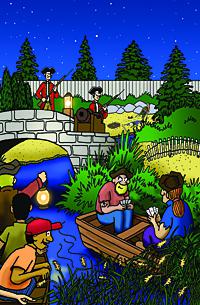 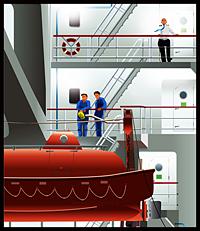 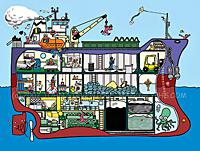 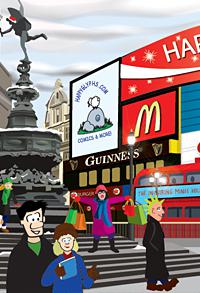 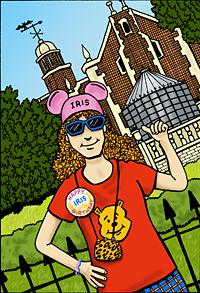 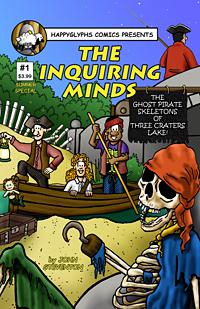 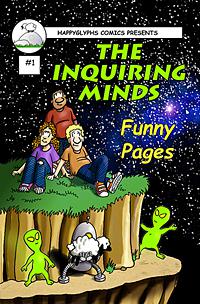 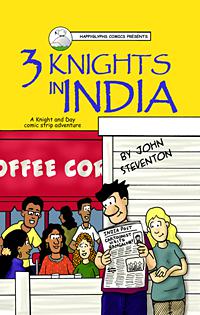  |
April 2013
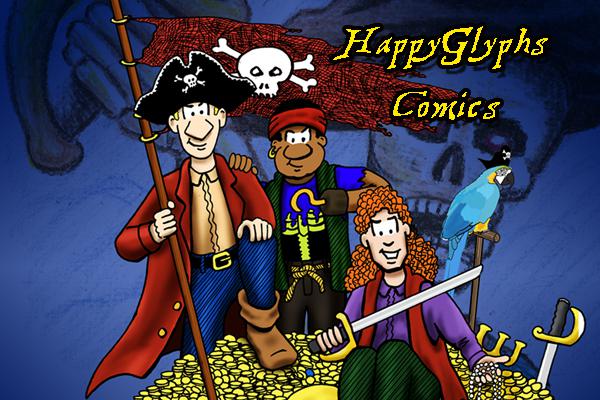
City: Columbus, Ohio
Comics: Knight & Day, The Inquiring Minds
Websites: www.HappyGlyphs.com
QRD – How old were you when you first got into comics & did you always stick with them or did you come back to them?
John – According to my mom I was drawing faces at age 2 & by age 6 I would spread out the Sunday comics section & practice drawing my favorite characters. I always read the newspaper comics as long as I can remember & when I discovered comic books; I read them off & on, in waves, but now it’s pretty steady.
QRD – What was the first comic book you ever bought?
John – Fantastic Four #161. I loved it so much I immediately ran back to the store & found #160.
QRD – How old were you when you put out your first comic?
John – I made my own mini-comics in middle school… say around age 11. They were a take-off of the Fantastic Four, of course, titled The Finky Four. Very crude, but there were tons of guest stars from other comics & I had so much fun creating them.
QRD – What decade do you think produced the best comics?
John – I’m biased towards the 60s & 70s, when Marvel was doing so many fun titles.
QRD – Why comics instead of just writing or drawing?
John – I’m an artist by nature, but also a storyteller. Even doing a freelance illustration such as a magazine cover, I try to tell a story with the image. For me words & pictures work so well together. I love comic strips as well as comic books & doing both the art & the words together gives you some interesting ways to tell a story, or a joke. A great facial expression can say a lot in a cartoon, where describing that expression does not have the same immediate impact.
QRD – Do you see mini-comics & indie comics as paths to mainstream comics or as their own unique media?
John – That’s up to the individual, of course; but for me it’s a little of both. I have my stories to tell, in my own way; but of course I would love to do work with others & for others. Writing an issue of The Fantastic Four is definitely on my wish list!
QRD – How many copies of your comic do you print in your first run?
John – I’m a growing small publisher, so every time it’s been different. Publishing costs are enormous, of course; so sometimes I’ve done print on demand just to see what the interest may be. When my graphic novel was serialized in a national newspaper, I had my first experience with large print runs… & what it takes to sell them. I’m finally back at the point now where I need to print into the hundreds again, so print on demand is not really an option anymore.
QRD – How much do you think comics should cost?
John – Enough for the creator to make a profit would be nice! Unfortunately, you have to price competitively. I’ve seen people trying to sell a comic book for 10 bucks, which is pretty much insane for someone starting out. With some print on demand printers, though, they may see that as the only way to make a profit. The big companies out there are full of advertisements & they still charge $2.99 for a full color book, so an independent creator should be looking at the 4 dollar range for a color book, just to stay competitive.
QRD – How many books do you produce a year & how many would you like to?
John – Maybe one a year, at the moment, although that may increase. Until now I’ve had several projects in the pipeline, which makes it difficult to focus on one, but keeps things fresh by going back & forth. I’d love to do at least one comic book a year now & focus less on comic strip collections, which can take up an enormous amount of time at the rate I’ve been going.
QRD – Do you think stories should be serialized or delivered as complete works?
John – Whatever works best for the creative team & publisher, but serialization has its advantages. Serialization is great so you can build a readership over time & have a built in audience for when the product is finished. At the same time, though, if you serialize the whole thing, some of your audience will be done with it. The complete work will always have to have a little extra to bring the readers back for the second round.
QRD – How are comic strips different than comic books & which medium do you prefer?
John – I love both, for different reasons. The comic strip is nice for telling gags & even for extended storylines & the set format makes them easy to produce. & the nice thing about a strip is that you can share them right away with your readers & even if they’re part of a longer storyline, a good strip still stands alone; so you can publish it online without an explanation. A comic book can tell a larger, fuller, story, but can take a long time to produce & a long time to get feedback, especially if you do all the work yourself. You can publish individual pages, but you’ll need an explanation of sorts & usually more than one page so the reader can catch on to what is happening. Then there are the design issues… a collection of comic strips can quickly be created using a template, where a comic book needs a lot more design considerations, such as where to place spreads, & taking advertisements into account & whether a page will be on an odd or even page. It’s much harder to make changes with a comic book without upsetting the flow.
QRD – How long is it from when you start a comic until it’s printed?
John – I do not have a set schedule yet, because I do not have a regular series at the moment. To date I have had several different projects in various stages of completion, while at the same time doing freelance illustration. I do plan on giving The Inquiring Minds a regular series, however, & I’m hoping to do at least one color comic a year, with one or two other projects coming out concurrently.
QRD – What do you do better with your comics now than when you first started?
John – Everything! I’m constantly studying & learning. My art has improved & hopefully my storytelling.
QRD – Do you do thumbnails?
John – Yes, of course. I keep journals of all my ideas, with sketches & story outlines, & anything that comes to mind. From those pages I create more detailed thumbnails & eventually tighter sketches.
QRD – At what size do you draw?
John – At least 50% larger than the final reproduced size.
QRD – What kind of pens do you use?
John – Rotring Art pens are my favorite & a Wacom pen now, for digital work. I also use Faber-Castell artist pens & markers.
QRD – What does your workstation look like?
John – A mess! I have mugs of pens & pencils & piles of different papers & reference models & a tub of baby wipes, which are essential to any cartoonist. If I dig deep enough, who knows what I’ll find there? I do try to keep it clean, because having a clean easily accessible workstation is rule#1, but I just get so darned busy at times.
QRD – At what point in the artistic process do you work digitally?
John – Usually coloring. Coloring by hand has always been my weak spot, but coloring digitally is brilliant. & my originals can always use some help, so I clean up my scans digitally & usually add a few lines or shading here & there to balance a page before coloring.
QRD – What do you think of digital comics & webcomics?
John – That’s a very broad subject. There must be millions of webcomics out there & I usually don’t read many. Many webcomics creators really need an editor, or to step back & look at their work with fresh eyes. There is some really good stuff out there, but most of them really need polishing. The medium is great for people who want to have fun & don’t care where it takes them; but if you want to do this professionally, you really do need to set a high standard for yourself. As for digital comics, I really haven’t had that much experience with them. I do plan on investigating the medium, but haven’t had the chance yet.
QRD – Do you prefer working in color or black & white?
John – Comic strips I prefer black & white to be traditional. With comic books, though, I like color because I can do some very nice color work & so my best work is in color.
QRD – How many different people should work on a comic & what should their jobs be?
John – For some, like myself, just one at the moment. My stories & characters are my own & my way of storytelling is very personal. As with a comic strip, I think having one person work on it keeps the vision pure & the consistency complete. The overall look & feel of the work is all mine. That doesn’t mean I won’t work with others, because I have, & it was great. & in the future, I plan on hiring artists to help out with some projects, just to get them done quicker, or because my style may not fit the work I’ve written. A team is definitely required if you want to put out a regular series on a frequent basis. It’s a lot of work for one or even two people.
QRD – How do you find collaborators?
John – So far, through friendships. If I like or admire someone’s work, & I have the opportunity to meet them, then you just see what happens. In the future I’ll probably approach people I admire & present the opportunity. It’s so much easier today with social media, although I find not everyone is easily approachable. & that’s fine, because that means they probably aren’t easy to work with, or are just too busy.
QRD – How tight do you think a script should be as far as telling the artist what to draw?
John – Pretty tight in some cases, as per page count & layout, but there should always be room for the artist to play. In my experience, a script is fluid & keeps writing itself. Ideas come to you after they have time to simmer, so leaving a little leeway here & there is useful for those times a brainstorm hits.
QRD – What do your friends & family think of your comics?
John – Ha-ha. That is such a difficult question because most of the people I know just aren’t comics readers. They like my work, but only a few of my friends are regular readers of any comics, so most have nothing to compare it to.
QRD – What do you think of superheroes?
John – I love a good superhero story. Not so much a bad one.
QRD – Marvel or DC?
John – Marvel, though there have been times I’ve slipped over to the dark side.
QRD – What comic characters other than your own would you like to work with?
John – The Fantastic Four, as I’ve mentioned earlier. In fact, I’m working on an awesome script… hopefully I’ll be able to pitch it sometime!
QRD – Ideally would you self-publish?
John – Well, I do self-publish, but that’s hardly ideal. It’s a ton of work for one person, seriously.
QRD – What conventions do you try to attend & why?
John – I do the Ohio Con & SPACE because they’re (a) local & (b) great shows. I do want to do the Baltimore Comic Con because I really seem to resonate with the crowd there & have met some great people at the show, but the show is always at a difficult time for me to attend, so I don’t get out there enough. & this year is the biggie; we’re heading to Comic Con International in San Diego! I won a coveted Small Press Table with my newest comic book & I am so looking forward to doing that show as an exhibitor.
QRD – What do you do to promote your books?
John – Whatever I can. Advertising is still a work in progress with me, seeing what works & what doesn’t. Doing cons is the best for me, though, because I am the work, so it’s easy for me to sell it face to face, one on one.
QRD – Do you think your comics are well suited to comic shops or would sell better elsewhere?
John – Absolutely! That’s what I’m currently working towards, with the best story & art that I can create. Some of my stuff should do just as well in a regular bookshop, though, especially when I collect my recent work as a graphic novel.
QRD – What other medium would you like to see some of your comics made into (television, film, games, action figures, etc.)?
John – I’ve actually designed a game based on The Inquiring Minds, but I’m waiting for the new series to take off before pursuing that. I’m sure they would make an excellent movie or animated cartoon as well.
QRD – Do you consider yourself a comic collector or a comic reader or both?
John – A reader, I guess. I save them & collect them; but I buy to read, not as an investment of any kind.
QRD – What do you see as the most viable mediums for comics distribution 10 years from now?
John – I’m sure Direct Neural Interfaces will be all the rage by then, but I like a paper book I can hold in hand, so I’ll be walking into my local mega-chain bookstore, where they’ll be able to download any book or comic that I desire & print it out on demand.
QRD – What would you like to see more people doing with comics?
John – I’d like to see more creators telling wonderful & unique stories, using the medium to its fullest potential & I’d like to see more people in general reading comics. There’s so much there for the average person to read, but I believe that most people still think comics are all just about superheroes. There are great superhero stories out there, but there really is so much more.
QRD – Anything else?
John – Thanks for the interview. Please let me know if there’s anything else you’d like to know. These have been some great questions!
